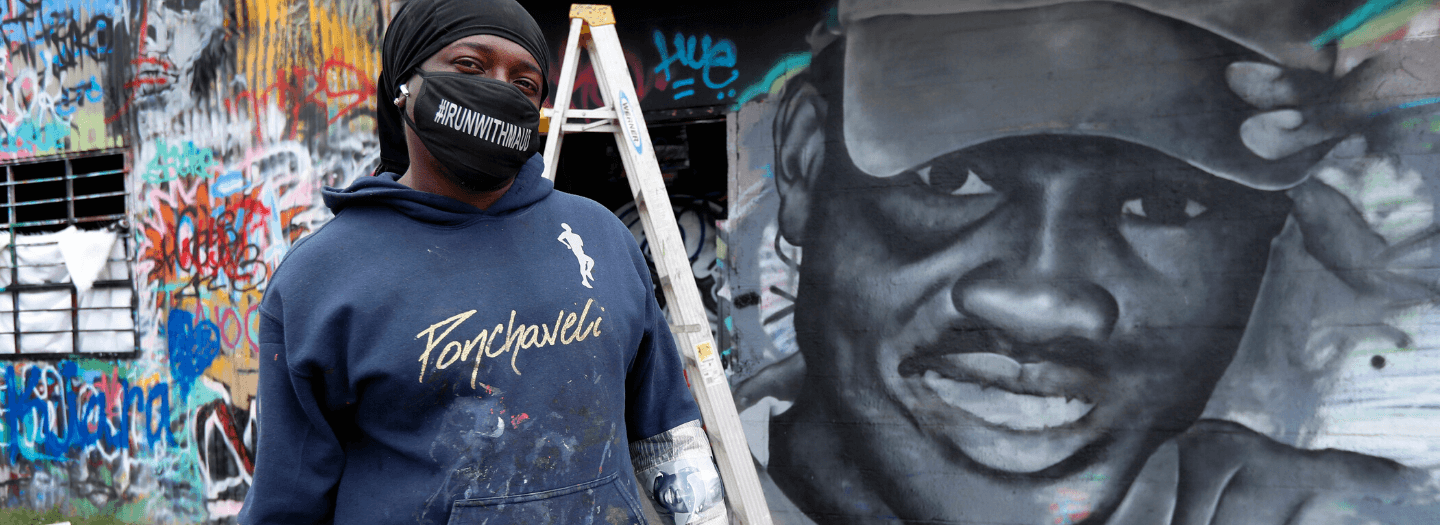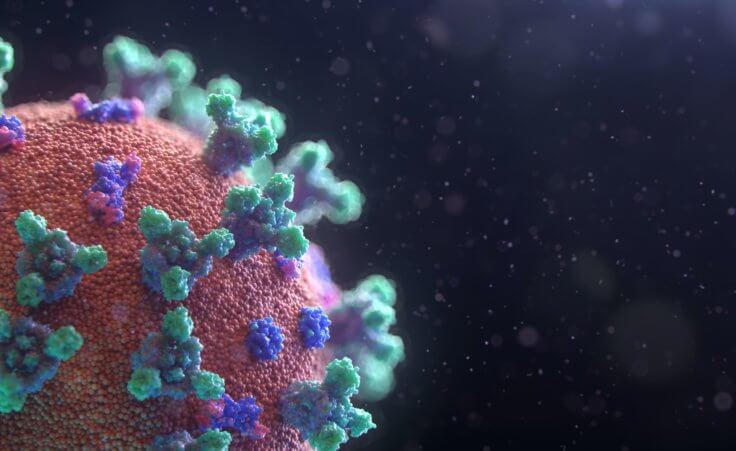
Artist Theo Ponchaveli wears a mask he created that reads, "Runwithmaud," as he poses for a photo in front of a mural that he is painting in the likeness of Ahmaud Arbery in Dallas, Friday, May 8, 2020.
Ahmaud Arbery would have turned twenty-six last Friday. People across the US commemorated his life by running 2.23 miles, referencing the day he died.
A former high school football star, he was jogging near his home on the outskirts of Brunswick, Georgia, on Sunday, February 23. According to authorities, he was shot and killed after being pursued by two white men with guns.
The men were charged last Thursday with murder and aggravated assault, two days after a shocking video of the shooting of Mr. Arbery became public. This tragedy is raising once again the specter of racism in our culture.
Coronavirus as a metaphor for racism
Administration officials announced Saturday that three members of the White House coronavirus task force, including Dr. Anthony Fauci, would self-quarantine after contact with a person who tested positive for COVID-19. Let’s take a moment to consider the pervasiveness of the SARS-CoV-2 virus as a metaphor for racism.
Both are unseen in a person’s life until they become symptomatic. Both can infect people who do not recognize symptoms of the disease in their lives and thus think they are free of infection. Both often produce symptoms that worsen over time. And both can infect people who become carriers who infect others.
A year ago, I wrote a white paper that examines the issue of racism in depth. I reported that slavery began in the New World in 1619 when the first group of African slaves arrived at Jamestown, Virginia. Many Europeans argued that Africans were inferior and declared that they were better off enslaved by whites than living in freedom in their homelands.
Planters also quickly realized that they could make enormous profits by importing and using enslaved laborers. Such laborers could be made to work longer and harder in the fields. Since they were so far from their African homes, they could not easily escape and return home. They came from a variety of nations and cultures, so they could not easily communicate with one another to organize resistance against their enslavers.
The US Constitution enshrined slavery, determining that enslaved persons would be counted as “three-fifths of all other Persons” for purposes of government representation and taxation (Article I, Section II, Paragraph III). It permitted the importing of slaves until 1808, with a tax of $10 per slave (Article I, Section IX, Clause I). And it required those living in free states to return escaped slaves to their owners (Article IV, Section II, Clause III).
Segregation in schools was not outlawed until 1954. Jim Crow laws enforcing racial segregation were finally overturned by the Civil Rights Acts of 1964 and the Voting Rights Acts of 1965. However, as I note in my paper and in this Daily Article, racial discrimination persists across America’s culture and churches today.
A “zero tolerance” policy
The depth and pervasiveness of the virus of racism require us to treat both the symptoms and the cause of the disease.
We should treat the symptoms of racism by continuing to work for justice and against the systemic discrimination prevalent in much of our culture. For example, as Jemar Tisby states eloquently in a podcast conversation on our website and in a Religion News Service article, we must all respond to the tragedy of racism by increasing our awareness, relationships, and commitment. And we must condemn and oppose white supremacy wherever we find it.
The underlying cause of this disease, however, is the depraved human heart.
Jesus was blunt: “Out of the heart come evil thoughts, murder, adultery, sexual immorality, theft, false witness, slander” (Matthew 15:19). But God can “give you a new heart” (Ezekiel 36:26). He can forgive every sin we confess (1 John 1:9) and then separate that sin from us “as far as the east is from the west” (Psalm 103:12).
Tomorrow, we will discuss the human side of this divine-human partnership. For today, let’s ask God to do his part.
Adopt a “zero tolerance” policy for the virus of racial prejudice in your life. To do this, ask the Holy Spirit if there is any vestige of this sin in your heart. If he brings such sins to your mind, ask your Father to forgive you and to give you his heart of unconditional, inclusive love.
After David recognized the severity of his sinful infection, he prayed, “Create in me a clean heart, O God” (Psalm 51:10).
Let’s make his prayer ours today.











